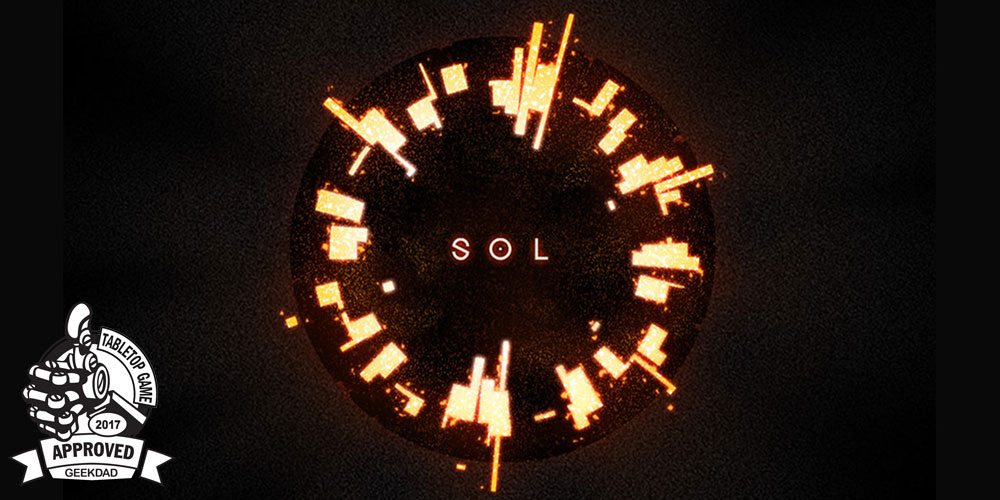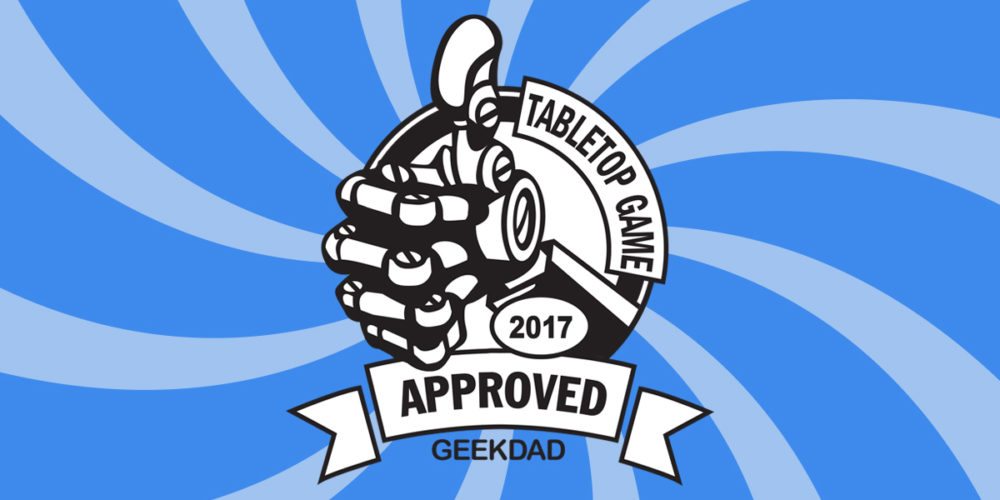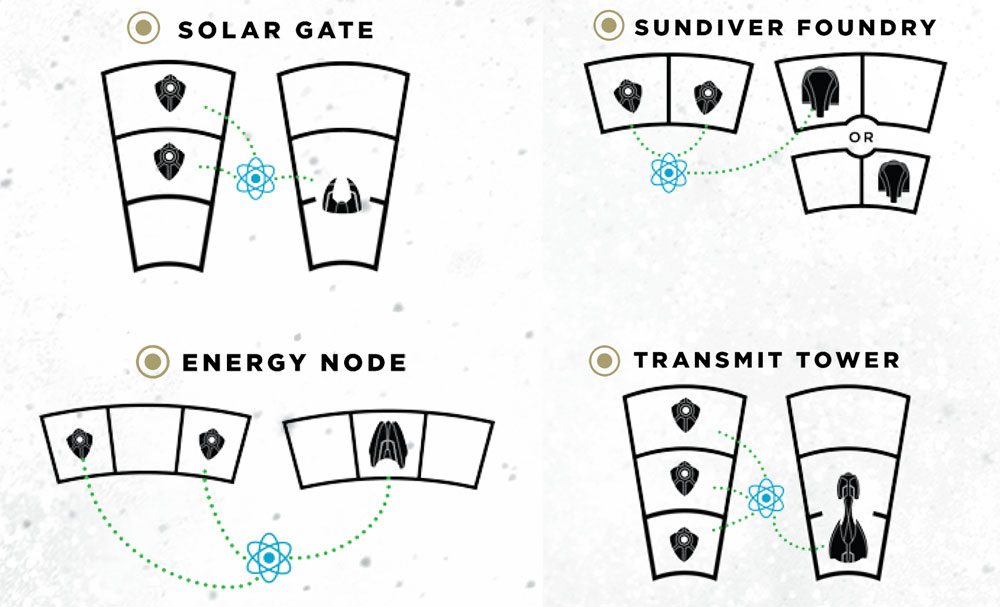In “Reaping the Rewards,” I take a closer look at the finished product from a crowdfunding campaign. Sol: Last Days of a Star was funded in June 2016 on Kickstarter, and was shipped to backers in July 2017—a few months later than their estimate of February, but still an impressive feat for first-time publishers Elephant Laboratories. This review is based on my original Kickstarter Tabletop Alert, updated to reflect final components.
The Story
Your sun is about to go supernova. You and the other worlds in the star system have built massive arks to save a small portion of your civilization, and you’ll harvest energy from what remains of the sun to power your arks. However, extracting this energy will hasten the star’s own destruction–can you escape before it’s too late?
At a Glance
Sol: Last Days of a Star is a game from Elephant Laboratories for 2 to 5 players, ages 14 and up, and takes 45-90 minutes to play (depending on number of players). The retail price is $60, and it is currently available directly from Elephant Laboratories. The game doesn’t have anything inappropriate for younger players, but based on the length and nature of the game I think the 14+ age recommendation is pretty good—my 10-year-old tried it and liked it, but did find it a little harder to plan for the long term.

Sol Components
- 1 double-sided game board
- 1 Momentum/Instability board
- 1 Instability marker
- 30 Instability Effect cards
- 96 Instability cards
- 7 Instability suit tokens
- 89 Energy cubes
- 5 sets of player components:
- double-sided player board
- player aid
- Mothership miniature
- Ark miniature
- 13 Sundivers
- 5 Solar Bridges
- 3 Energy Nodes
- 3 Sundiver Foundries
- 3 Transmission Towers
- 1 Movement Tracker
- Mythos book
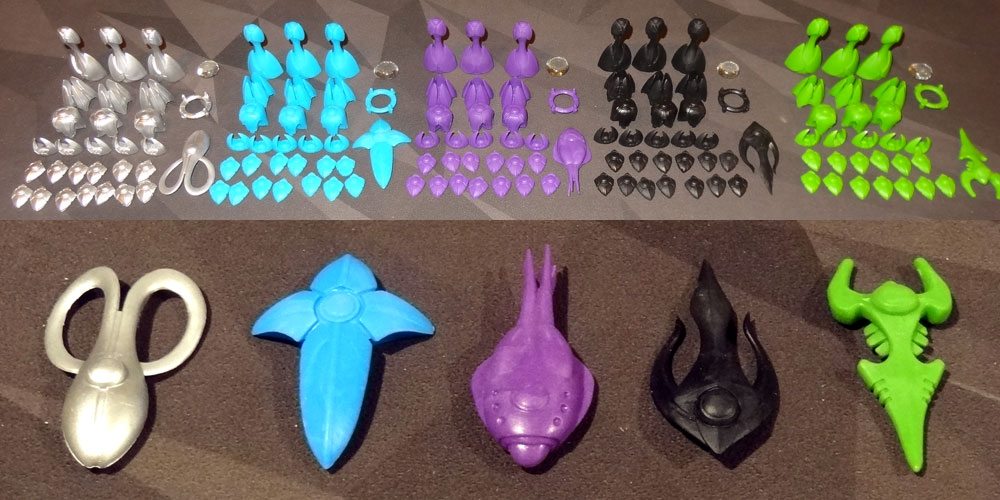
As you can see from the photo above, there are a lot of plastic bits in this game. The prototype I had played used wooden components, and then later Ryan Spangler, one of the designers, showed me 3D-printed prototypes of the various pieces. The components turned out quite nicely: 150 plastic pieces in all, from the tiny sundivers to the five large motherships. There are five unique designs for the motherships, but the other components are the same for all players (other than color). The colors are ones that you don’t always see in games—particularly the metallic silver—but should be fairly good for color-blind players.
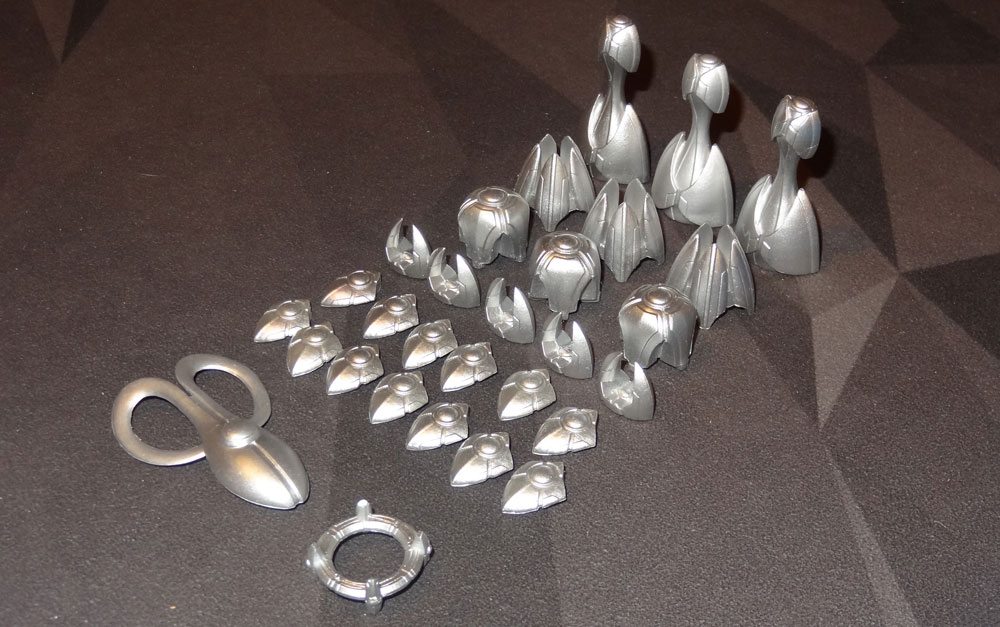
I really like the various components, though I have to admit that the silver mothership just looks like a pair of cartoon scissors to me. And now, it will look like that to you, too.

There’s a separate board for tracking the sun’s instability and the momentum of the various arks. The instability marker is a red flame miniature, which looks amazing. The board itself has a nice design, with an inward spiral for the instability and an outward spiral for the momentum (which also serves as player scores). Each player will start with 0 momentum, and track their momentum with their ark miniatures.
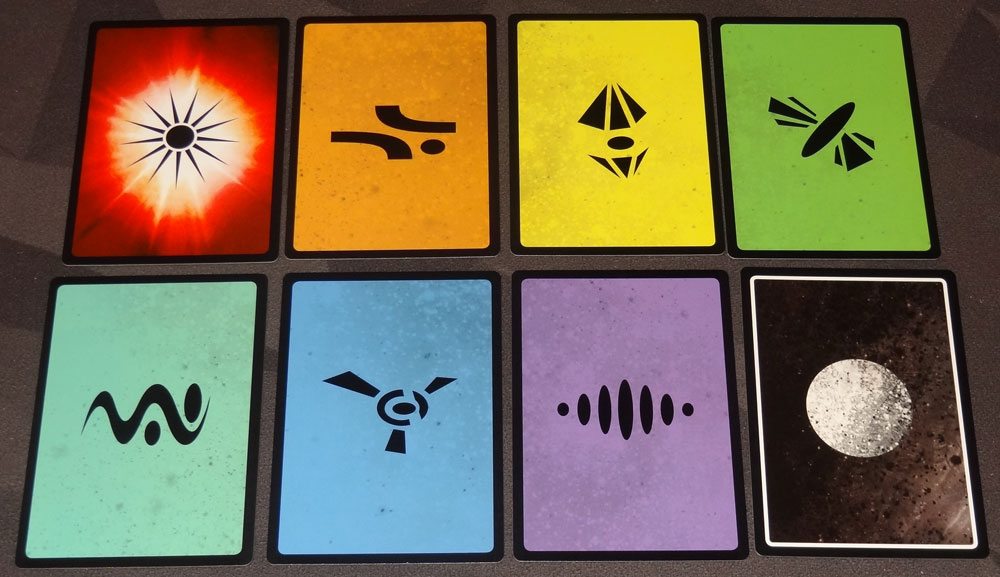
The Instability Effect cards with the suit tokens are a way to mix up the game a bit. Basically, the Instability cards you draw from the deck just show a symbol and color—by themselves, they don’t really mean anything. For each game, you will set out some number of effect cards, marking them with the tokens so they’re matched to a specific symbol. When you draw a card, you refer to the symbols to see what effect it has. Depending on which ones you choose, you could have a game with a lot more direct attacks on opponents, or ones that affect you instead.
The prototype cards had colored symbols on a black background, while the final cards have black symbols on a colored background. I slightly prefer the prototype design in this case, but the current cards look more like the wooden tokens, so it may make them a little easier to match.
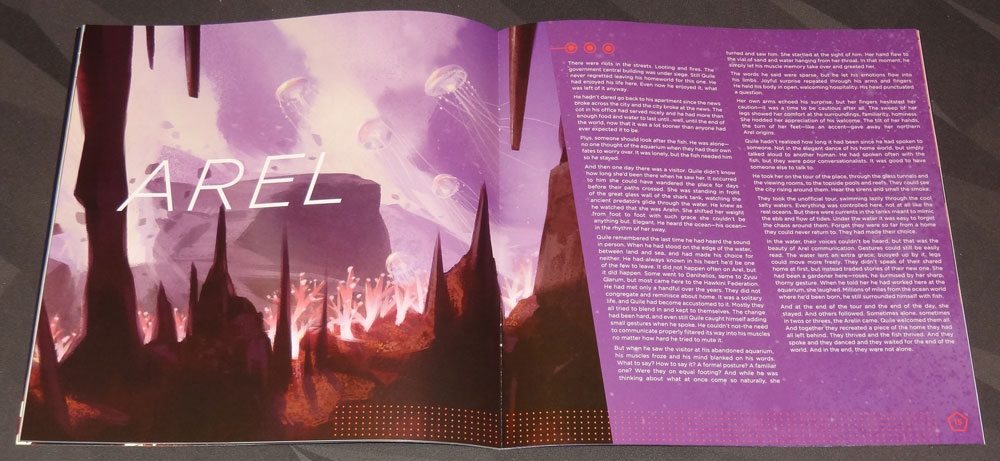
The Mythos book, which was added through a final stretch goal during the campaign, is a lovely booklet that gives you more background about the world of Sol. But it’s not a dry info dump—it’s actually several short stories told from the perspective of the five different civilizations around this dying star, with beautiful illustrations. We get to read about the discovery of the sun’s impending death, the development of technology to save civilizations, and the difficult decisions about who would get to go on the arks and who would sacrifice themselves into the sun to power those arks. The various civilizations are quite different from each other, too, and the stories reflect that. Kudos to author C. J. Hallowell, who wrote the stories.
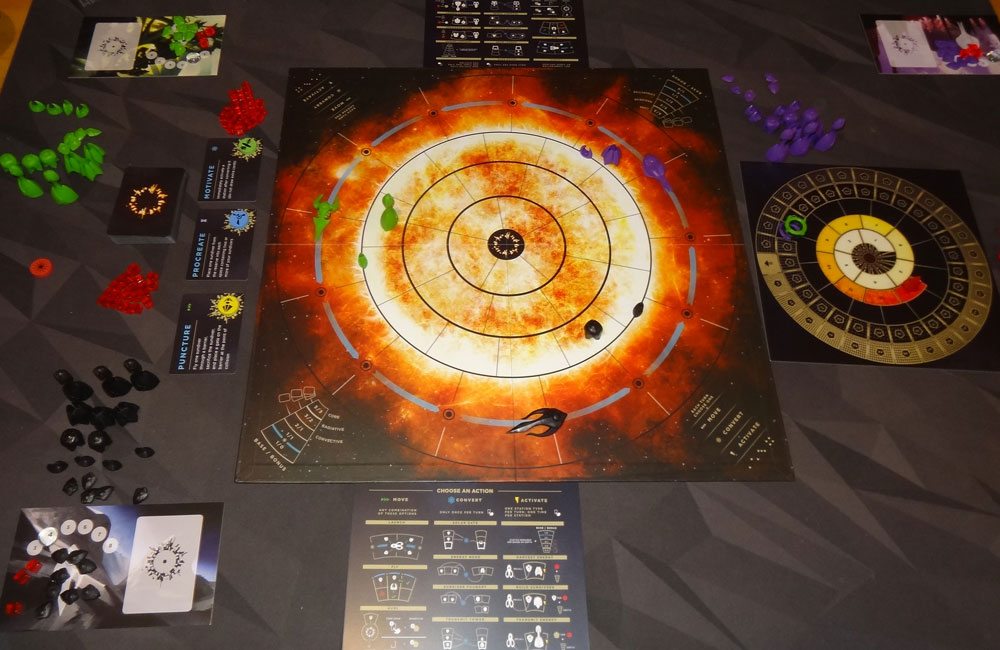
How to Play Sol
You can download a PDF draft of the rules here.
The object of the game is to build up the most momentum on your Ark before the the sun goes supernova and everyone else dies a fiery death.
Setup
To set up, each player takes all the components for their world. The Arks are placed on the Momentum track at 0, the Instability marker is placed on 13 of the Instability Spiral, and the Energy cubes are placed in a supply on the corners of the board. Each player starts with 8 active Sundivers (placed on the player boards), and the rest are set aside in a supply. Each player also gets 3 Energy cubes, and the movement marker starts at 3 on the player board. The rest of the components are set aside, ready to be built.
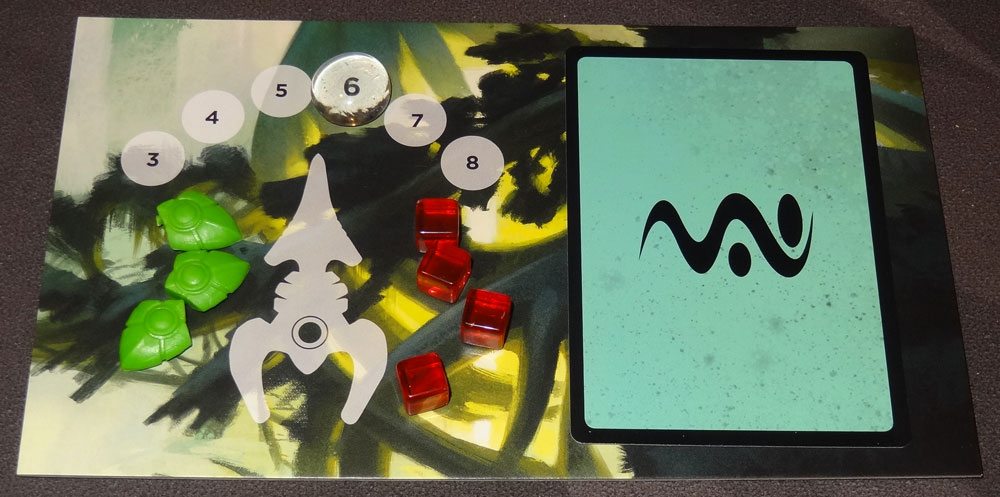
The Motherships start equally spaced around the sun on the line between “Upper Orbit” and “Lower Orbit.” There will be one larger gap between two of the ships–that marks the active player.
Pick suits for the Instability deck–the more players, the more suits you will use, but you always include the red explosion suit–and shuffle the deck together. Then pick one Effect card per suit and place those on the table, with one suit token on each card.
Your Turn
On your turn, you take one of three actions, and then move your Mothership one space to fill in the gap:
- Move Sundivers around the board
- Convert Sundivers into Bridges or Stations
- Activate Stations with your Sundivers
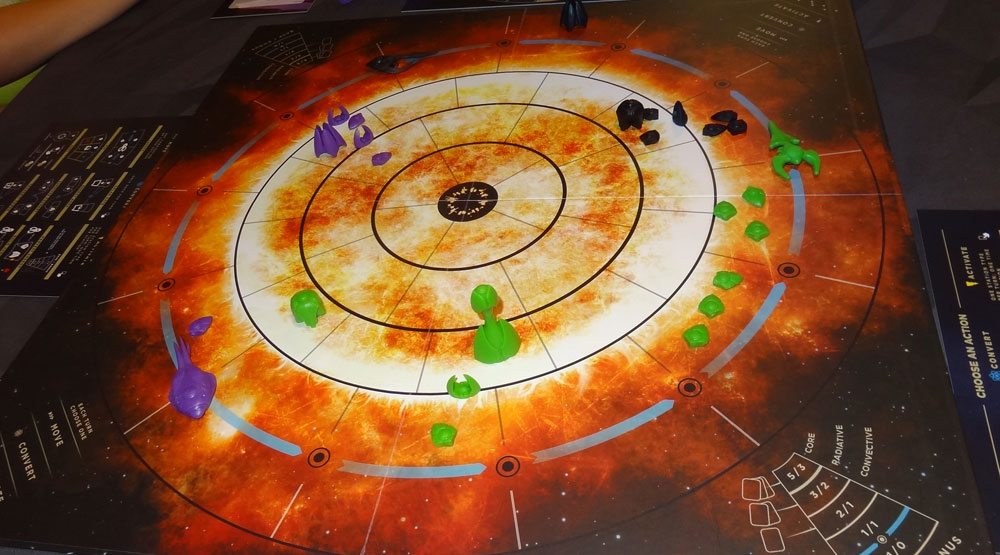
Move
Your Mothership just automatically orbits the star, one space per turn. You spend movement points to launch Sundivers into the four spaces surrounding your Mothership, and can then spend movement points to move around the board. You start with 3 movement points, and each time you build a Station, you get additional movement points for your Sundivers. Sundivers can move around in the two Orbit layers, but to cross the heavy black lines into the levels of the star, they have to use Solar Bridges. If you have Sundivers in the Core of the sun, you may also hurl them into the heart of the sun, permanently removing them from the game, but you gain 2 momentum for each Sundiver sacrificed.
In Sol, you may use any player’s Solar Bridges and Stations, but the owner gets a bonus. When you move across another player’s Bridge, that player gains an Energy from the supply (maximum 1 energy per turn, regardless of how many of that player’s Bridges are used). No bonus is given for using your own Bridges.
Convert
Sundivers can be converted into Bridges, Energy Nodes, Sundiver Foundries, and Transmit Towers when they form certain patterns on the board. The converted Sundivers go back into the reserves (not on your player board) and then the new structure is placed on the board. You may build one structure as an action, and you will draw cards based on the layer of the sun the new structure is in–the deeper into the core, the more cards you will draw.
When you draw cards, you will reveal them. Each time a red explosion suit is revealed, a solar flare occurs. You will move the Instability marker one step closer, and players with 13 or more Energy cubes will lose half of them. There’s also a bonus activation for any Stations in Upper Orbit. Finally, you choose one card to keep, placing it on your player board. The card may then be discarded on your turn to use the effect associated with that suit.
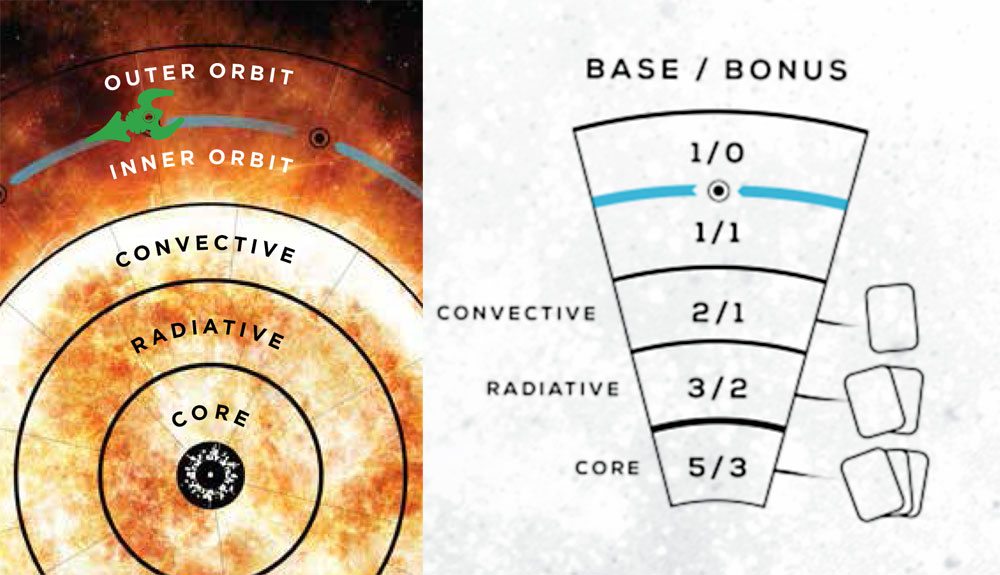
Activate
If you have a Sundiver in the same space as a Station (Tower, Foundry, or Node), you may use the activate action. You choose a type of Station, and then you may activate each of that Station type by returning a Sundiver from that Station to your player board. If you use a Station owned by another player, that player will get a bonus.
The three Stations are:
- Transmit Tower: spend Energy cubes to increase Momentum for your Ark.
- Sundiver Foundry: spend Energy cubes, gain Sundivers from reserve onto your player board.
- Energy Node: take Energy cubes from supply.
The amount of Energy you must spend or take depends on the layer of the sun that you’re in, and it’s all or nothing. In the Core, a Sundiver Foundry will take 5 Energy and build 5 Sundivers–but if you only have 4 Energy cubes, you can’t build just 4 of them. The Station’s owner gets a bonus to use, but it’s also all or nothing–if the owner cannot use the bonus, the active player may choose to take the bonus as well.
Activating Stations will also cause you to draw cards, possibly triggering solar flare effects.
End of turn
At the end of your turn, you orbit your Mothership one space, and it’s the next player’s turn.
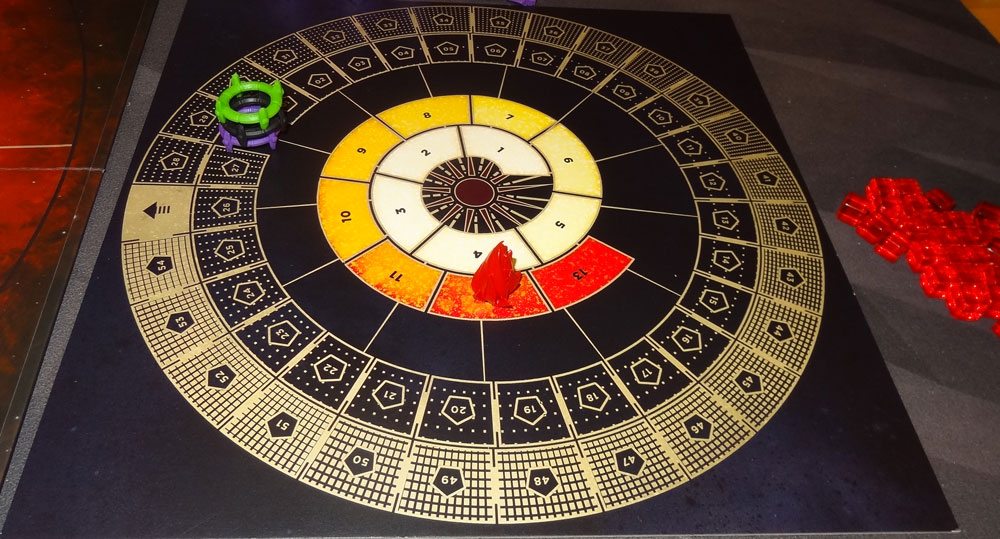
When the 13th Solar Flare occurs, the game immediately ends. The player with the most Momentum escapes the explosion and survives, and the rest, well, they weren’t so fortunate.
The Verdict
Sol: Last Days of a Star is the first game from brothers Ryan and Sean Spangler, and I think they’ve done a pretty great job with it. While a few of the mechanics seem familiar, the overall experience is a new one, and includes some ideas I hadn’t seen before.

I like the use of the Instability Effects cards, which I’ve already mentioned above. It allows for a host of different card abilities, a different game each time you play, without the expense of dozens of extra cards. I particularly like that the effects are color-coded by type of effect. Blue cards are recommended for first-time players since they are simpler effects. Red cards are direct attacks and things that affect your opponents, and can be included if you want a lot more player interaction.
That said, even without the red cards, there is player interaction because of the way the structures work. It’s interesting that when you build things, anyone can use them. You have to make decisions about when to build a structure and when to just send your Sundivers to an existing structure. Is it worth the cost? How about the bonus your opponents will get if you use theirs? How many turns will it take you to move your Sundivers to their structure, compared to the number of turns it will take to recoup the converted Sundivers?
If you let others build bridges deeper into the sun, that may allow you to spend your own resources on more effective Stations deep in the Core–and when everyone wants to use your Stations, you reap the bonuses.
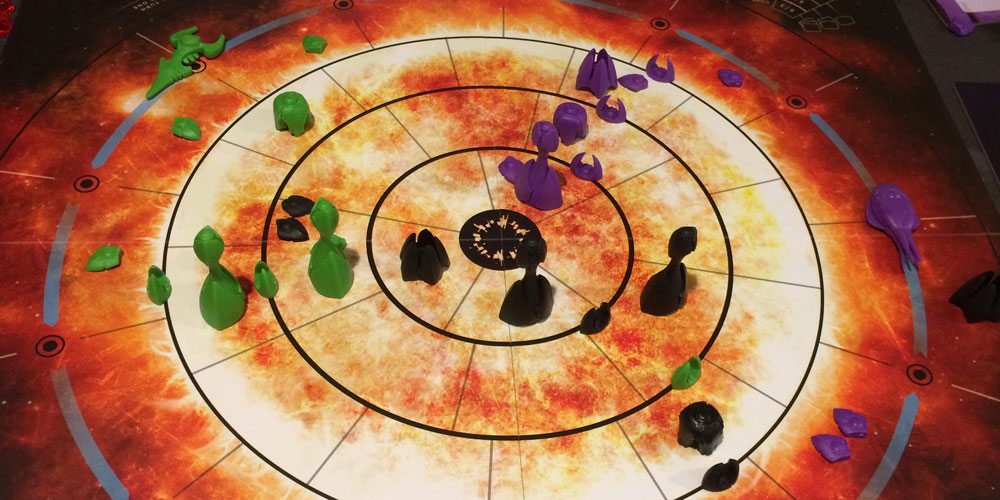
The instability aspect is also interesting–the more you build structures and use stations that are closer to the heart of the sun, the more cards you will draw, and the sooner the game will end. The beginning of the game starts off at a somewhat leisurely pace, but it feels more frantic by the end. In one game, a player was able to hasten the end of the game by hurling sundivers into the core for extra momentum—thus drawing cards and getting closer to the last solar flare.
The orbiting Motherships are also a key part of the game (though also one of the easiest parts of the turn to forget). Newly placed Sundivers must be placed adjacent to your Mothership, but as you orbit the sun, you’ll end up far from the structures you built at the beginning of the game and much closer to those your opponents have built. Careful placement of bridges and other structures is beneficial both to you and your opponents, and you have to rely on each other (or waste an entire orbit to get back to your own bridge).

I really love how the game turned out—the components are very nice, and the board itself is eye-catching. My daughters were very curious about it, having seen the plastic miniatures, so I set it up and played it with them. Granted, my four-year-old didn’t really know what she was doing, but we let her decide what she wanted to build next and where, and then helped her get her sundivers to the right places to convert them into structures. My 10-year-old likes it and thinks it’s cool, but will need a little more practice to be able to compete with more experienced players (like myself!).
All of it adds up to a very cool (or hot?) experience, which is why I’m giving Sol the GeekDad Approved stamp!
I would recommend Sol: Last Days of a Star for players who have some experience with strategy games, though it is also easy to get drawn into the game if you like the sci-fi theme. Visit the Elephant Laboratories website to find out more or to order a copy!
Click here for a full index of our tabletop game reviews.
Disclosure: I received a finished copy of this game for review.
